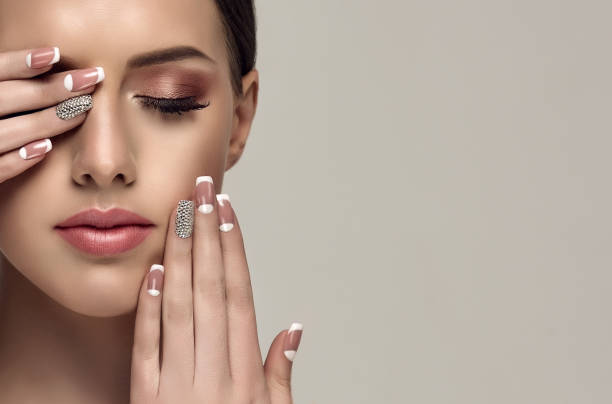What are various functions and structure of nails?
Function and Structure of Nails
Function and Psychology of nails
Nails are very tough sheets of keratin growing from the epidermis of the dorsal surface of the toes and fingers. They are another form of skin appendage. Nails protect the distal tips of the fingers and toes, enable the fingers to grasp very fine objects, increase the sensitivity of the digits, as well as increase the strength of the fingers and toes. In addition, the condition of the nails also reflects the health of the body.
In healthy individuals, nails grow by about 0.1 - 0.15 mm per day. The growth rate varies with the individual, being faster in children and young people, and slower in older people.
The growth rate is also different between toes and fingers, with fingernails growing faster than toenails. There are also seasonal growth differences with faster growth in summer and slower growth in winter.
Structure and composition of nails
What is generally called the nail, is actually a nail plate.
The nail is equivalent to the horny layer is the skin. It has no living cells, is composed of very tough keratin, and is formed of closely linked sheets of keratin cells.
In comparison to the horny layer of the skin, the nail jas a lower lipid content of 0.15 - 0.75%. On the other hand, the sulfur content of 3% is relatively higher than that of the skin keratin.
Although the form of the nails is different from that of hair since the proteins from which this is composed are the same, the amino acids in nails are very similar to those of hair in comparison to the horny layer of the epidermis.
Like hair, the nail is produced by the nail matrix. The nail grows out over the nail bed towards the fingertip.
The nail bed supplies water to the nail and plays a role in ensuring that the nail grows along the nail wall in a fixed direction. The nail separates from the nail bed at the free margin of the nail and since water is no longer supplied from the bed to the nail at this point, the water content falls, explaining why the free margin of the nail is easily broken.
The milky-white half-moon shape at the root of the nail is called the lunula. The nail at this part is not fully keratinized. In comparison to other parts of the nail plate, the lunula is softer and is not in complete contact with the nail bed.
The parts of the skin surrounding the nail are called the nail wall. The root of the nail is called the back nail and the sides are called the side nail walls.
The skin touching the nail at the root of the nail is called the eponychium; its role is to protect the imperfectly-formed nail. When the eponychium is missing, the nail is often scarred and the newly-formed nail shows abnormalities.
The nail matrix contains melanocytes which produce melanin pigment and there are small amounts of melanin in the nail.
Physical characteristics of nails
Nails contain 5% to 24% water depending on the external environment. Like hair, they absorb and lose water quite easily.
hen nails absorb water, they swell in volume and the thickness changes more than the length and width. This is believed to be the result of the layered construction.
The change in the toughness caused y water absorption and loss is the same as that of hair becoming softer with water absorption and brittle with water loss. The tendency for nails to break easily is the result of our daily lifestyle such as bathing and washing each day.
Nail Damage
Nail damage is very common; split nails in which the free margin of the nail looks like mica is called onychoschisis.
One cause of split nails at the free margin is the reduced water content due to the inability of the nail bed in this area to supply water to the nail.
Another physical cause is excessive use of nail enamel and enamel remover, which cause water and lipid loss, as well as lipid loss due to exposure to soap and detergents.
Consequently, when using nail enamel and remover, it is important to choose products that take lipid and water loss from the nail into consideration and to use nail treatments as part of the daily care routine.
by Wilson Levi
Tue, 03 Oct 23 08:58:04
by Wilson Levi
Tue, 03 Oct 23 08:47:41
by Wilson Levi
Tue, 03 Oct 23 08:44:45
Topics
Jammu & Kashmir - History, Culture & Traditions | J&K Current Trends | Social Network | Health | Lifestyle | Human Resources | Analytics | Cosmetics | Cosmetology | Forms | Jobs
Related blogs
How to make a beauty blog and make money online: A Step by Step Guide for your venture.
Making Money Online has never been easy, and now...How can Blockchain revolutionize the Cosmetics Industry?
How is Blockchain changing the cosmetics or...What are the purpose and functions of shaving cosmetics? | शेविंग कॉस्मेटिक्स का उद्देश्य और कार्य...
Let's learn a bit about shaving cosmetics | आइए...What are whitening agents and how are they used in cosmetic products?
Let's learn a bit more about Whitening Agents...
Quote of the Day
"Time Flies Over, but Leaves its Shadows Behind"


